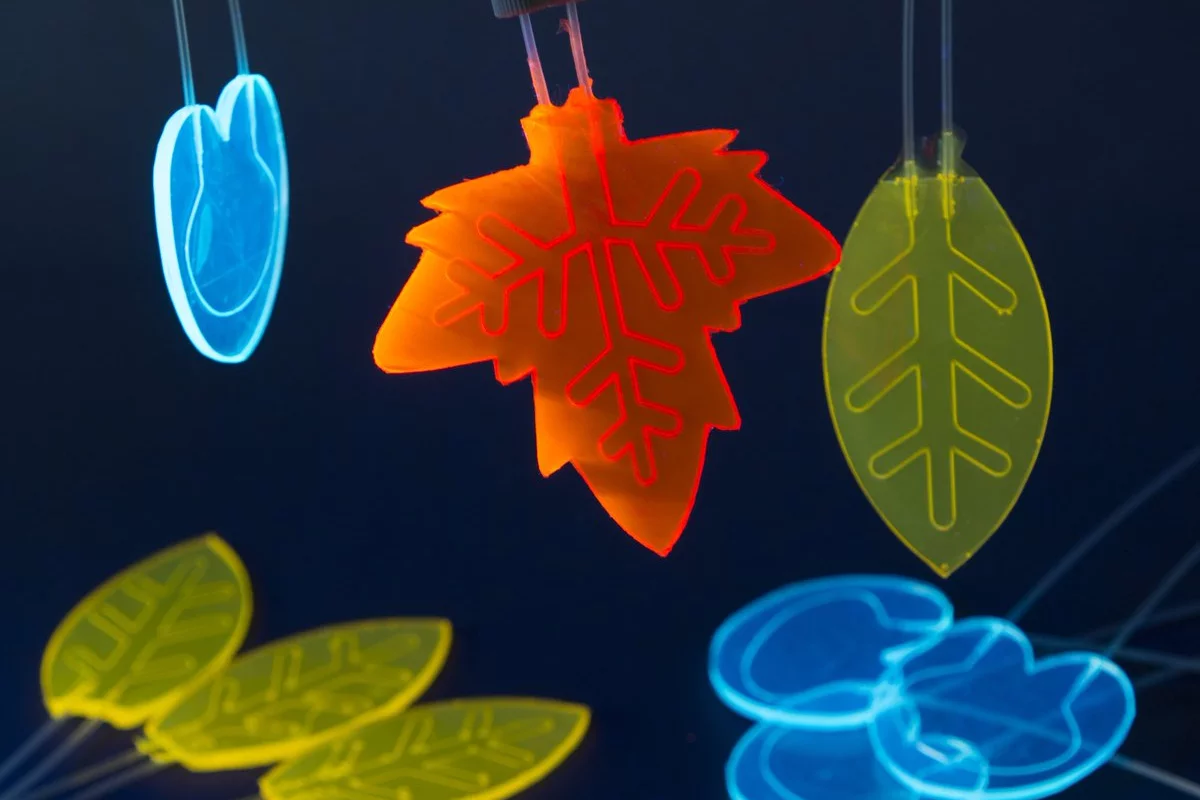Many of the problems human engineers face have already been solved by nature, so why not use those as a jumping off point? Making artificial versions of the humble leaf has been an ongoing area of research for decades and in a new breakthrough, researchers from the Eindhoven University of Technology (TUE) have fine-tuned their artificial leaf design and used it to produce drugs for the first time.
Natural leaves are clever little machines. They collect sunlight, and that energy is then used by chlorophyll molecules to power a chemical reaction that turns CO2 and water into glucose. The plant uses this glucose for energy, and expels oxygen as a waste product.
Artificial leaves are designed to mimic this process. They’re made of translucent materials that allow sunlight in and direct it towards tiny microfluidic channels running through the material like veins. A certain liquid is flowing through these channels, and the idea is that the energy from the sunlight triggers a chemical reaction in that liquid, turning it into something useful like a drug or fuel.
The new artificial leaf design from TUE builds on the team’s previous prototype, presented in 2016. Back then, the device was made of silicon rubber, but in the new version that’s been replaced with Plexiglas for several reasons.
“This material is cheaper and easy to make in larger quantities,” says Timothy Noël, lead researcher on the team. “It also has a higher refractive index, so that the light stays better confined. But the most important thing is that we can add more types of light-sensitive molecules in (Plexiglas). As a result, in principle all chemical reactions are now possible in this reactor across the entire width of the visible light spectrum.”
The leaf has started to earn its keep, too. The team put it to the test and found that it was able to successfully produce two different drugs: artimensinin, which is effective against malaria, and ascaridole, which is used against certain parasitic worms.
Given its small size and scalability, the team says that the artificial leaf could eventually be used to produce drugs and other molecules right where they’re needed. Malaria drugs, for example, could be made in the tropical regions most at risk of malaria, saving the cost and trouble of transporting medicine long distances. It could even one day be used to help astronauts produce vital medicines on the Moon or Mars.
“Artificial leaves are perfectly scalable; where there is sun, it works,” says Noël. “The reactors can be easily scaled, and its inexpensive and self-powered nature make them ideally suited for the cost-effective production of chemicals with solar light. I am therefore very positive that we should be able to run a commercial trial of this technology within a year.”
The research was published in the journal Angewandte Chemie. An explainer of the artificial leaf can be seen in the video below.
Source: TUE




